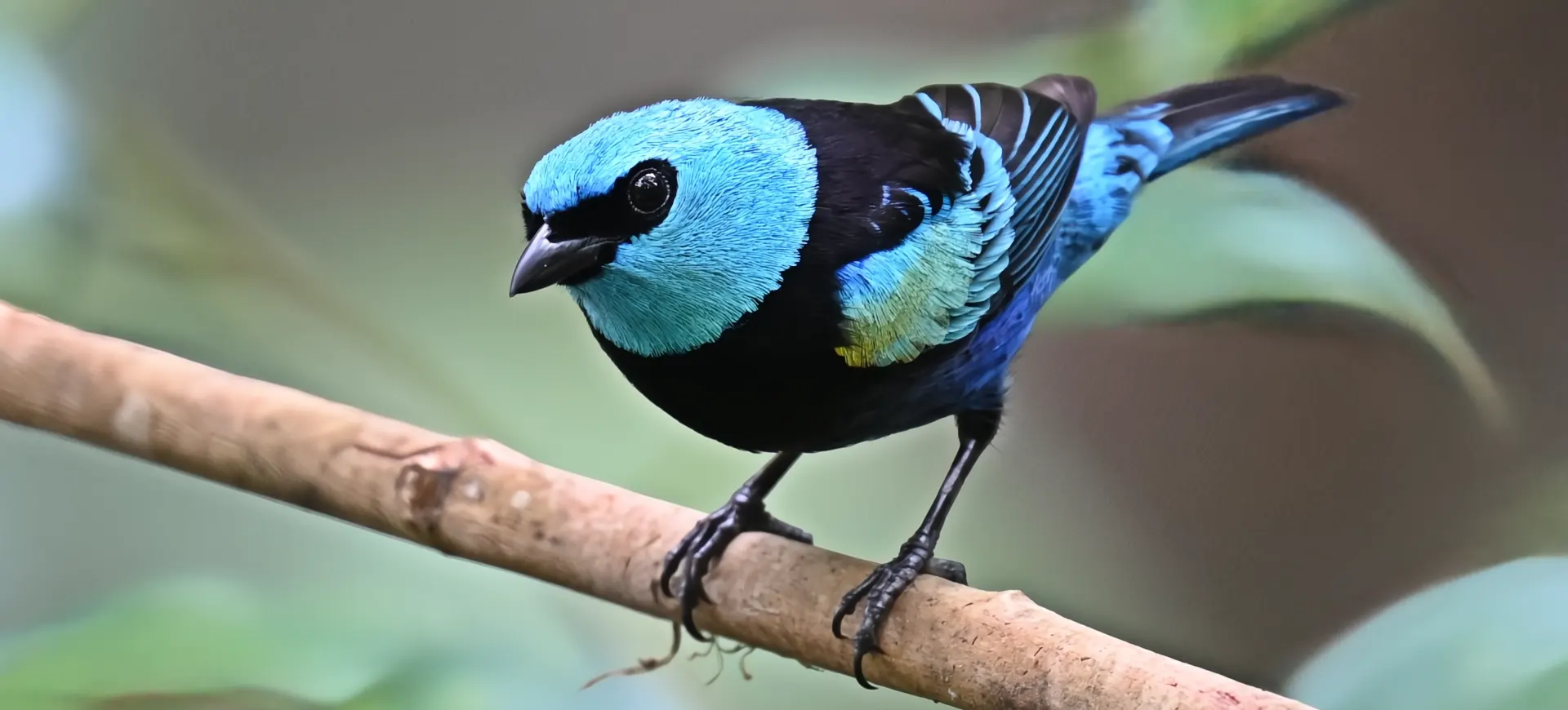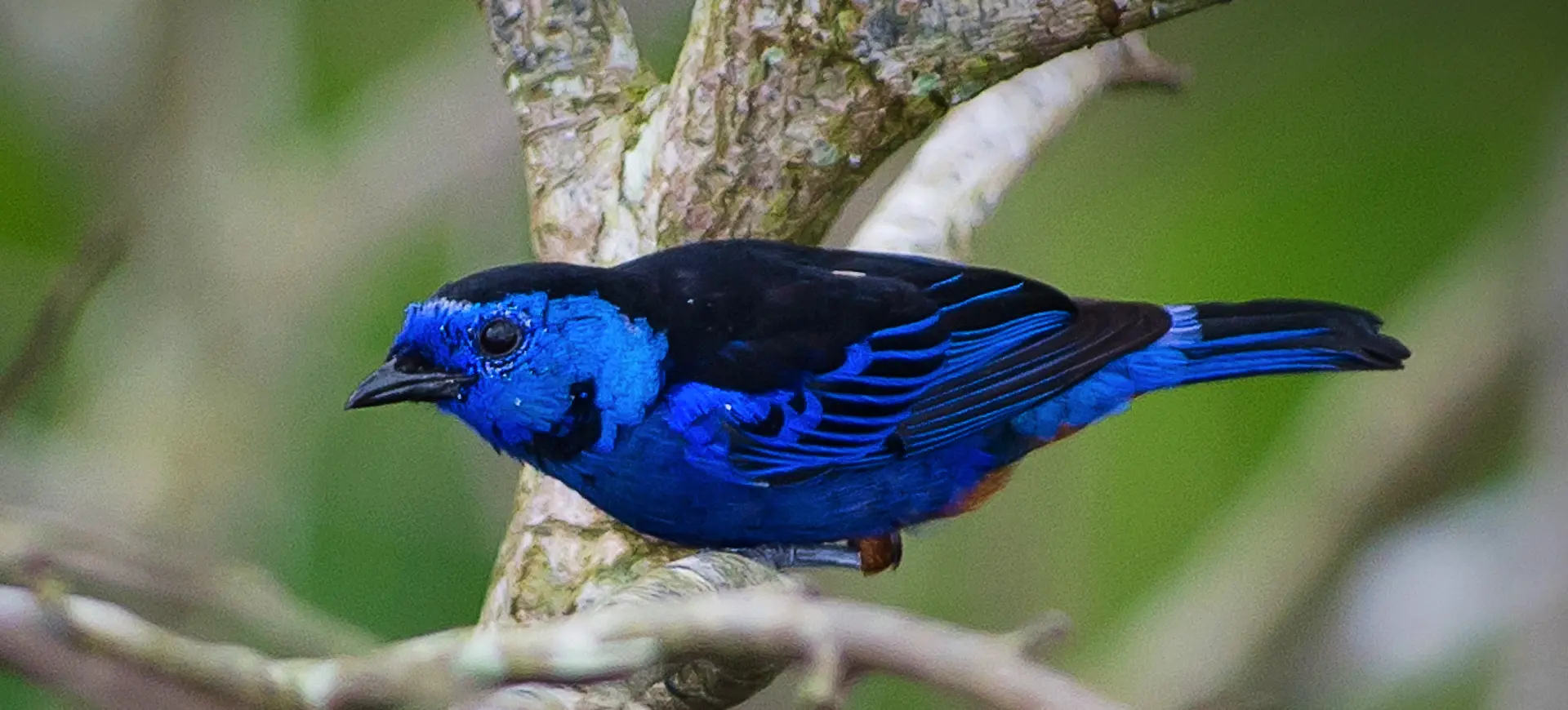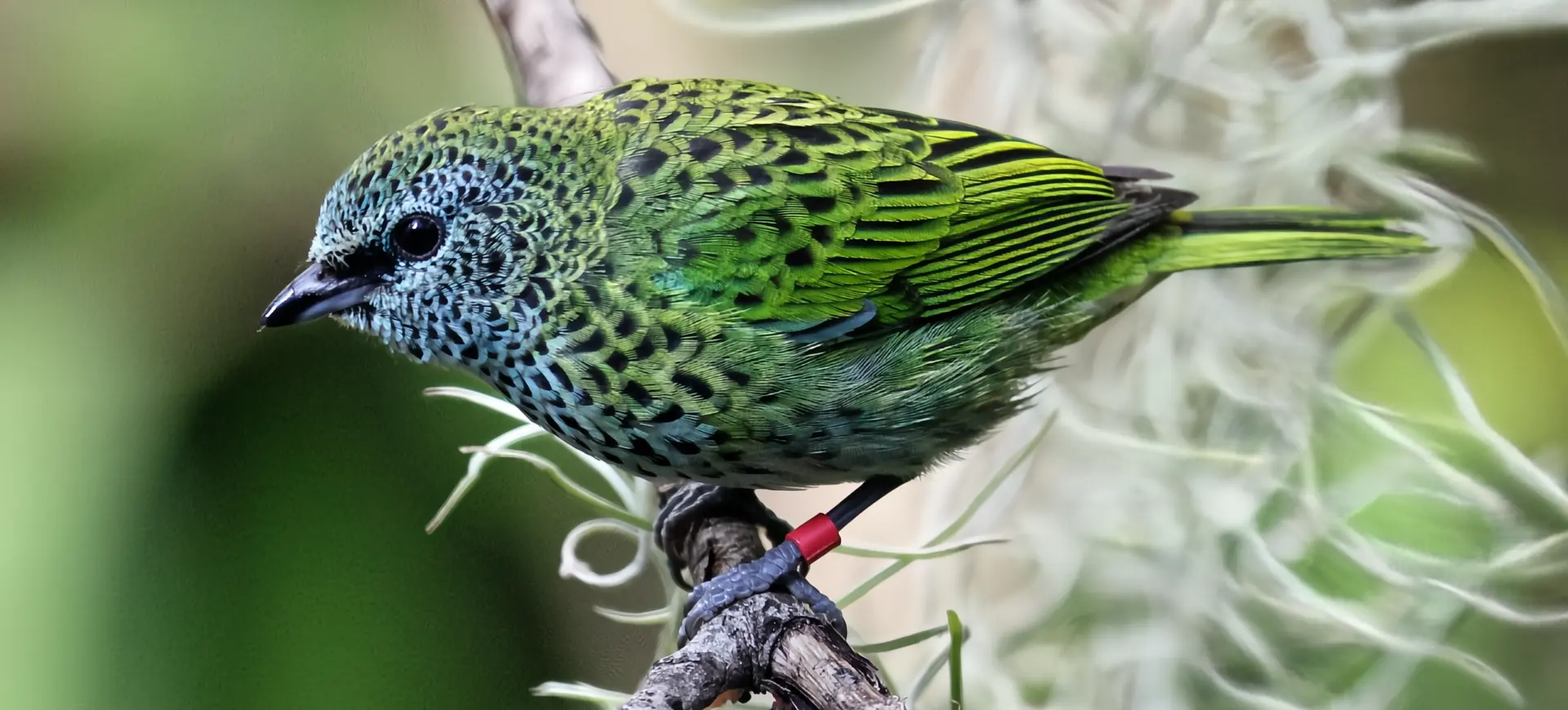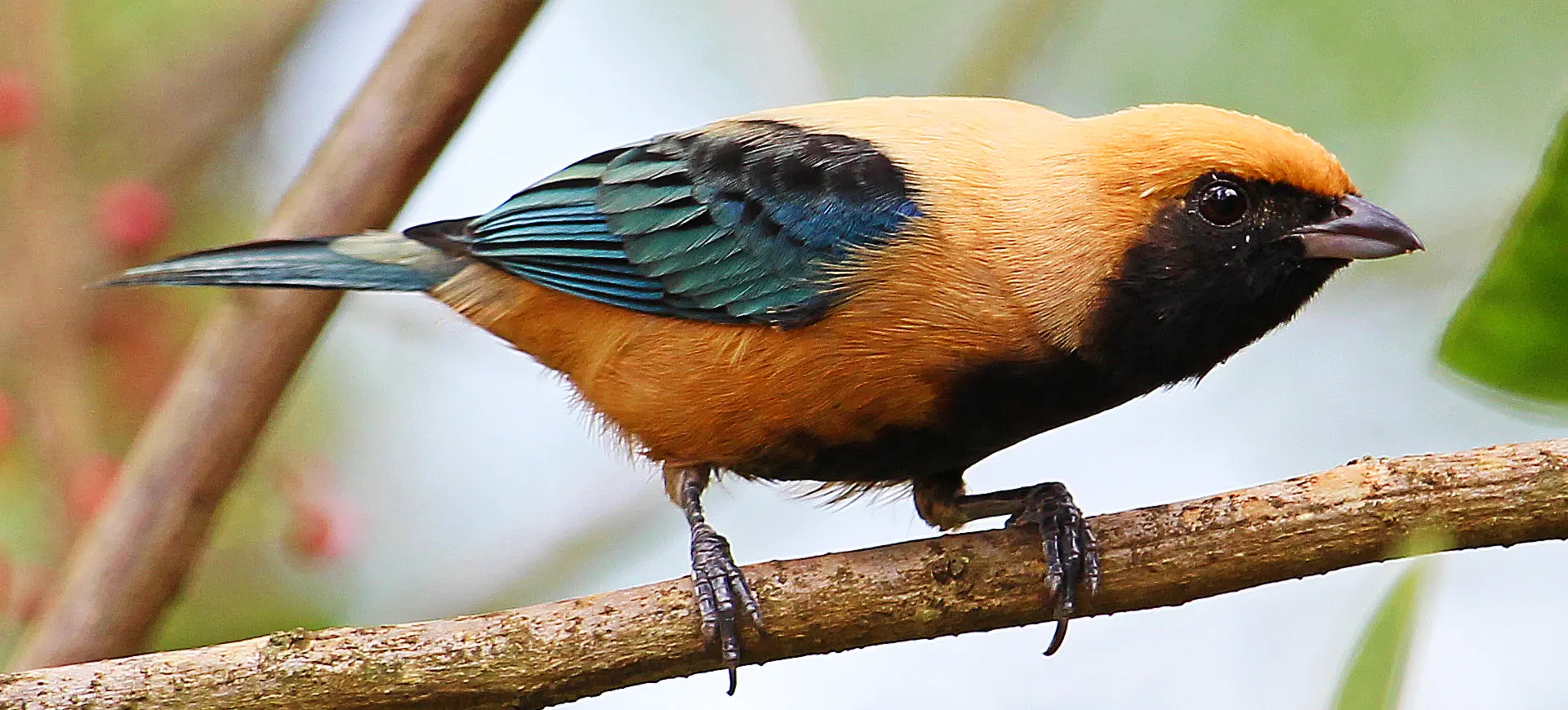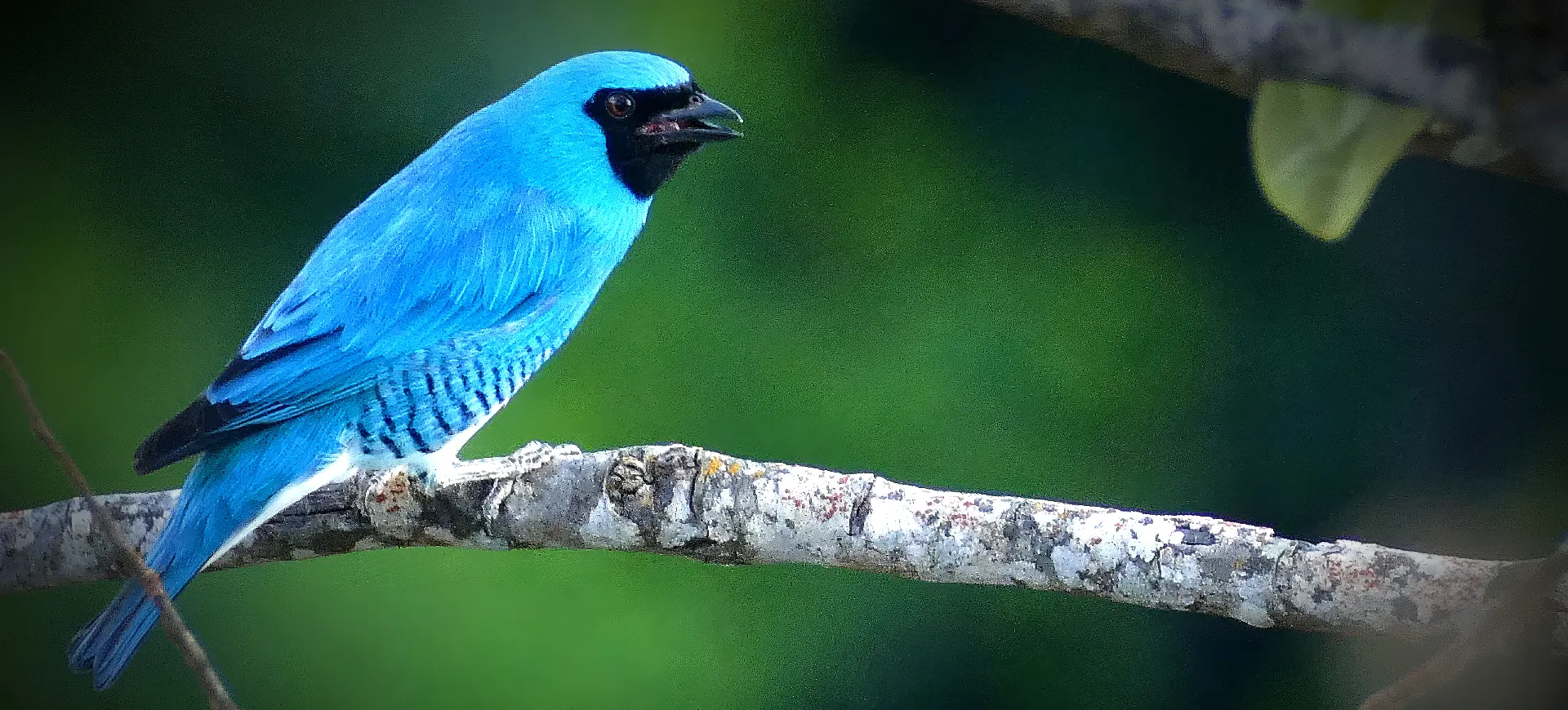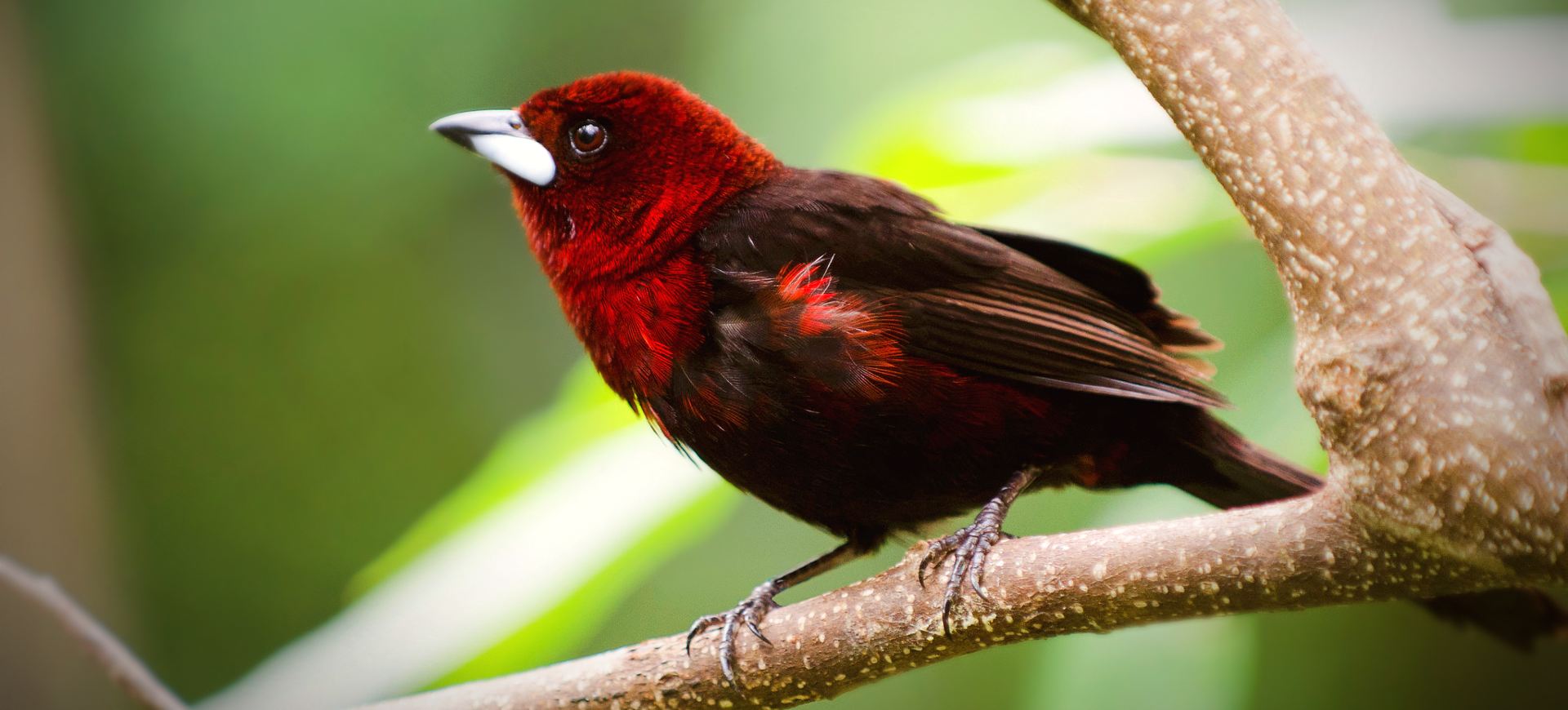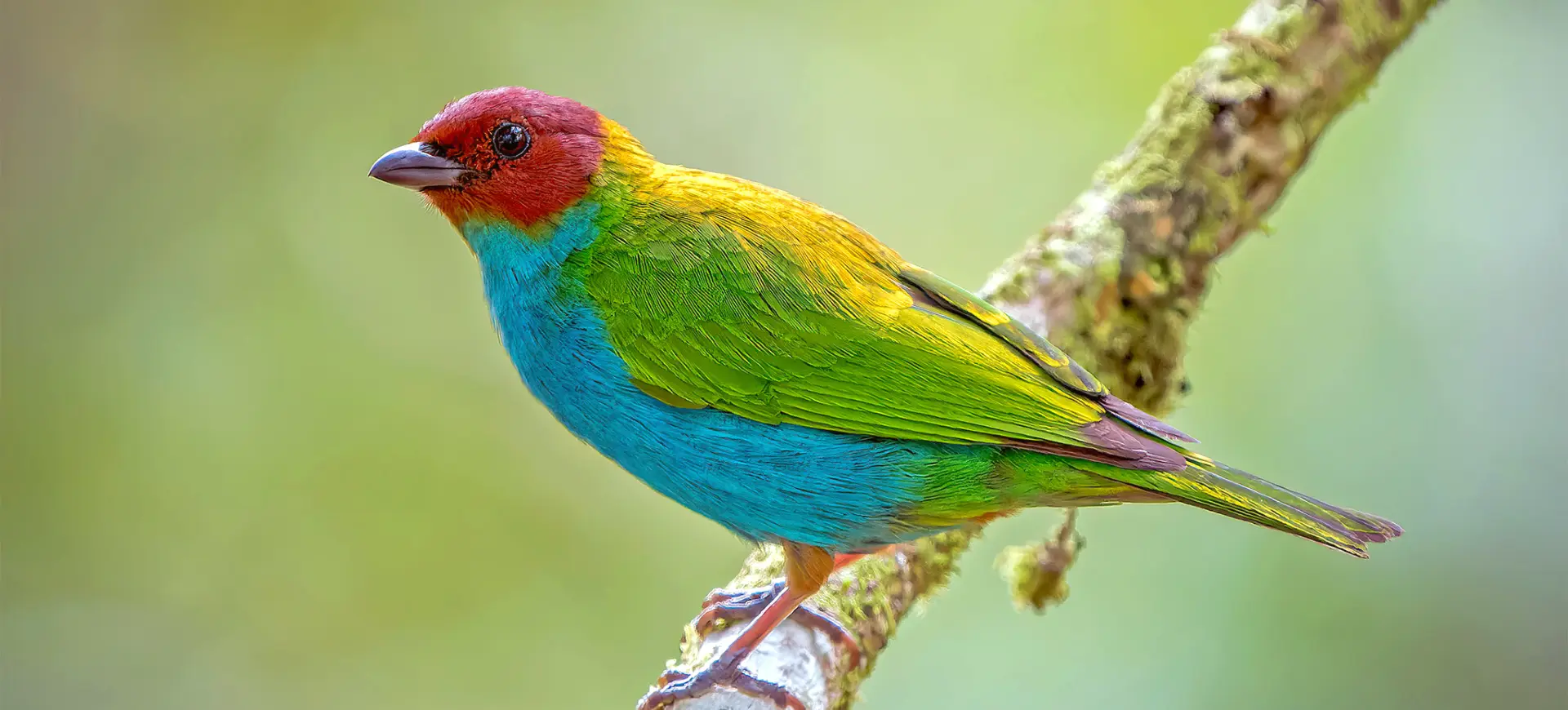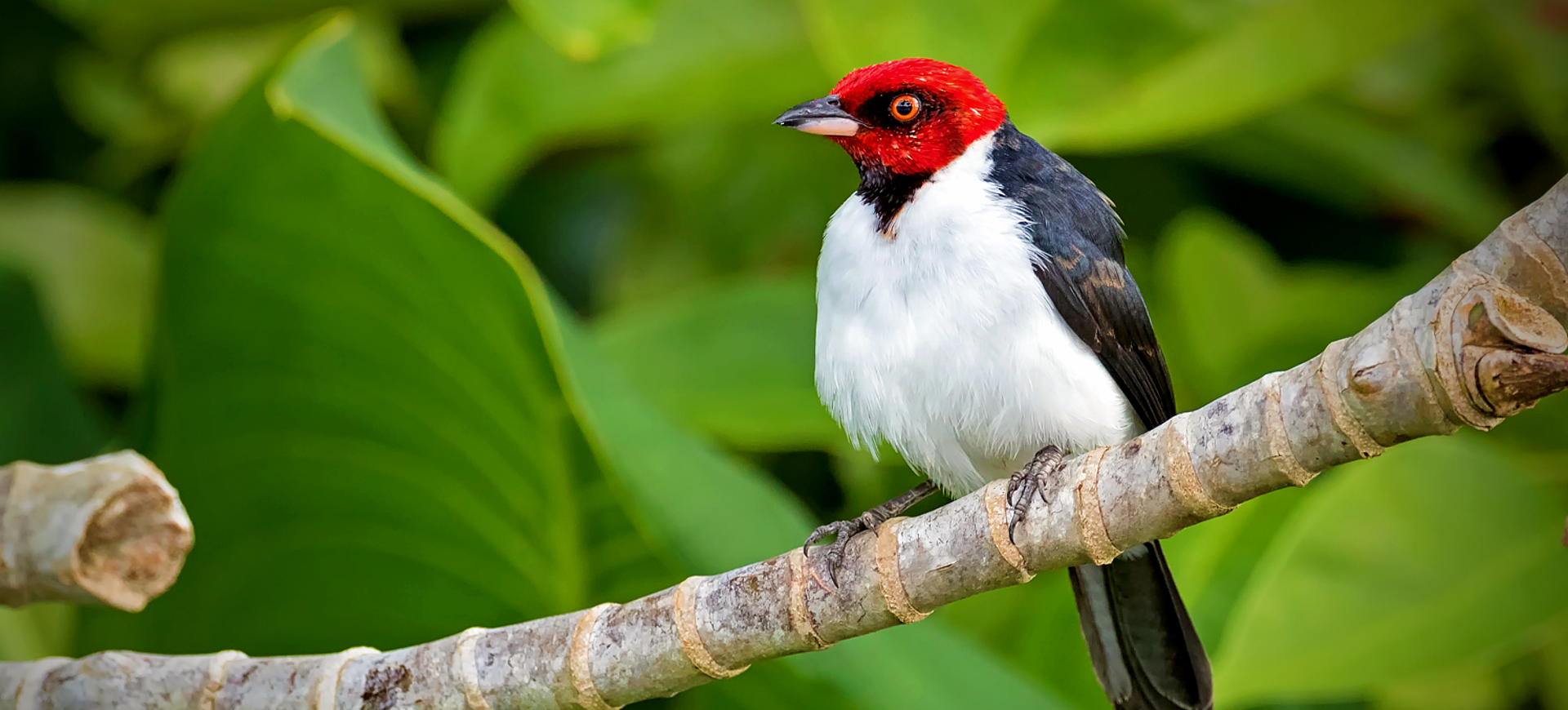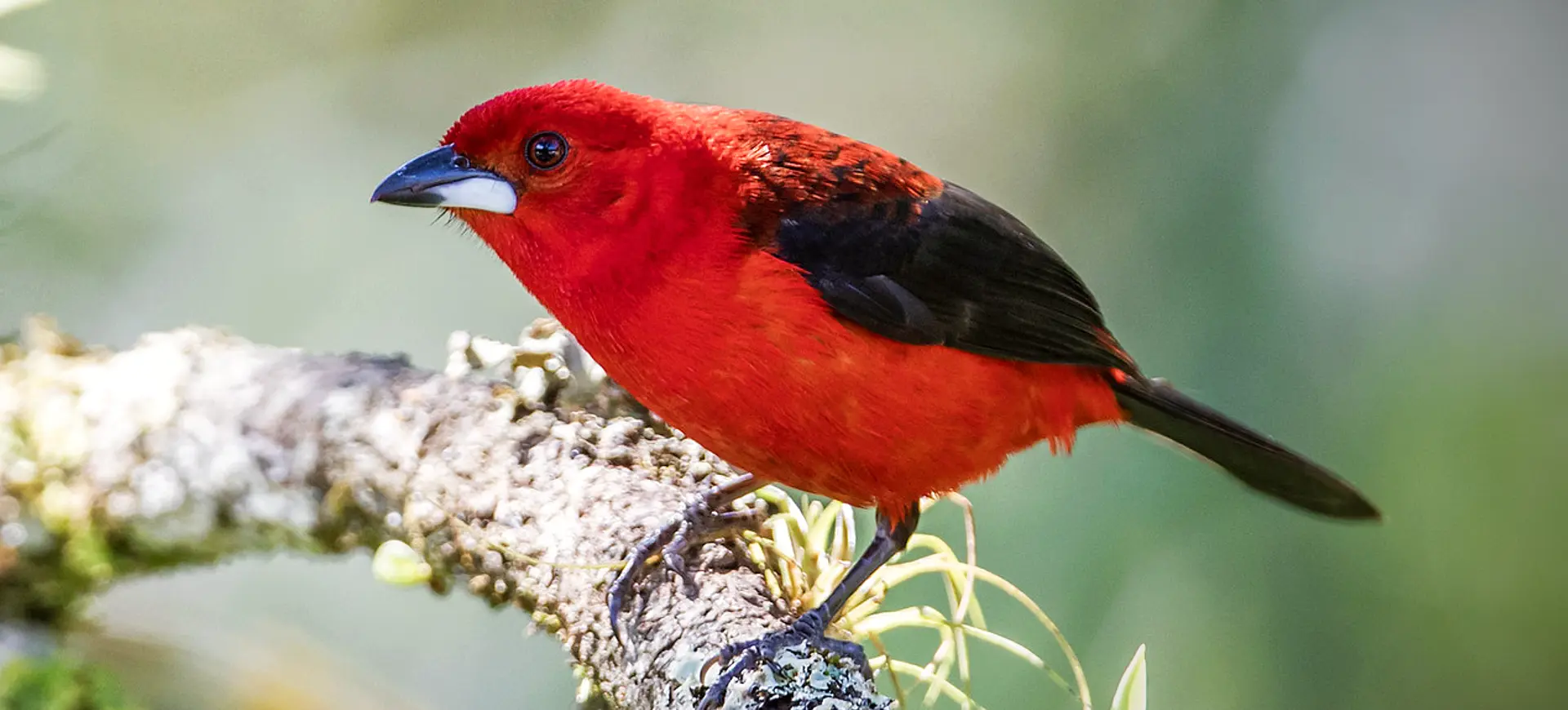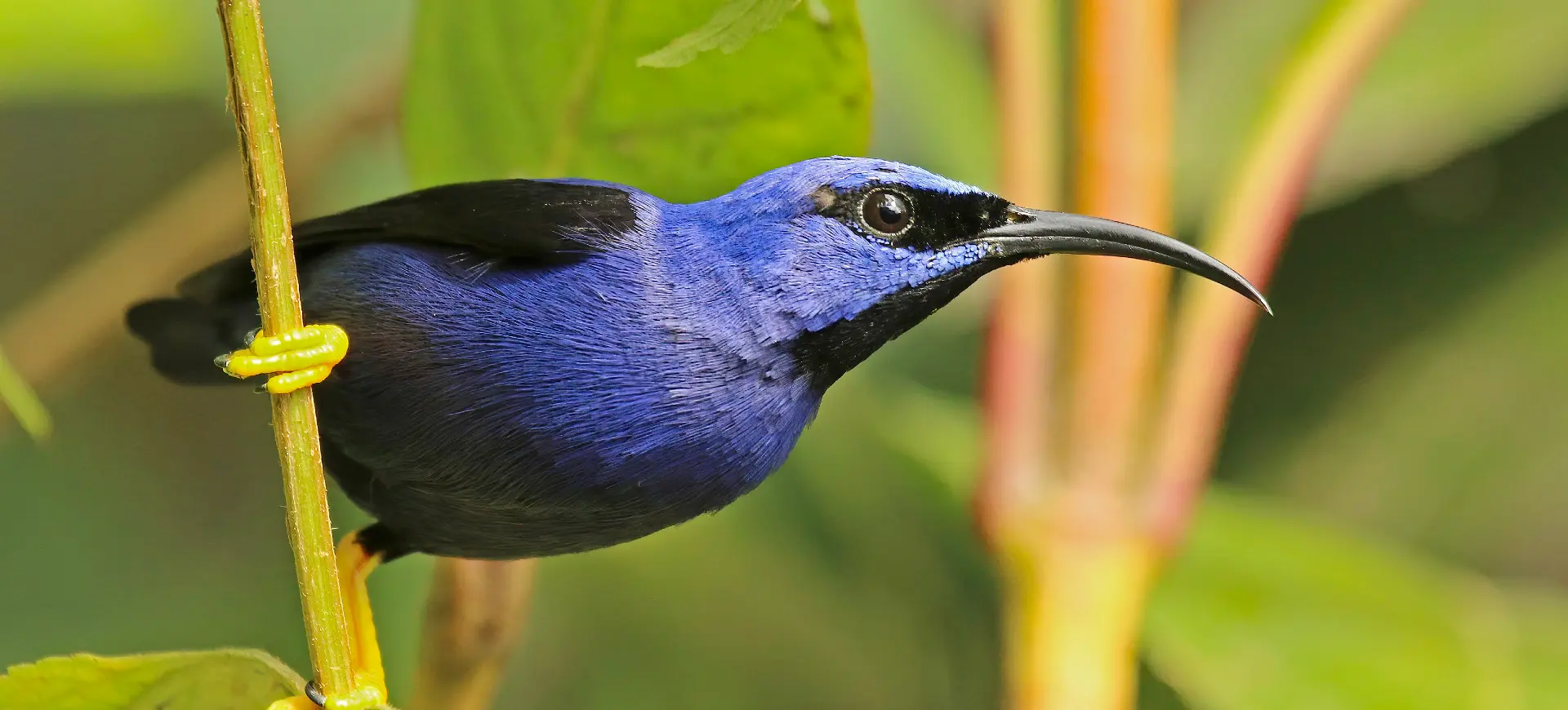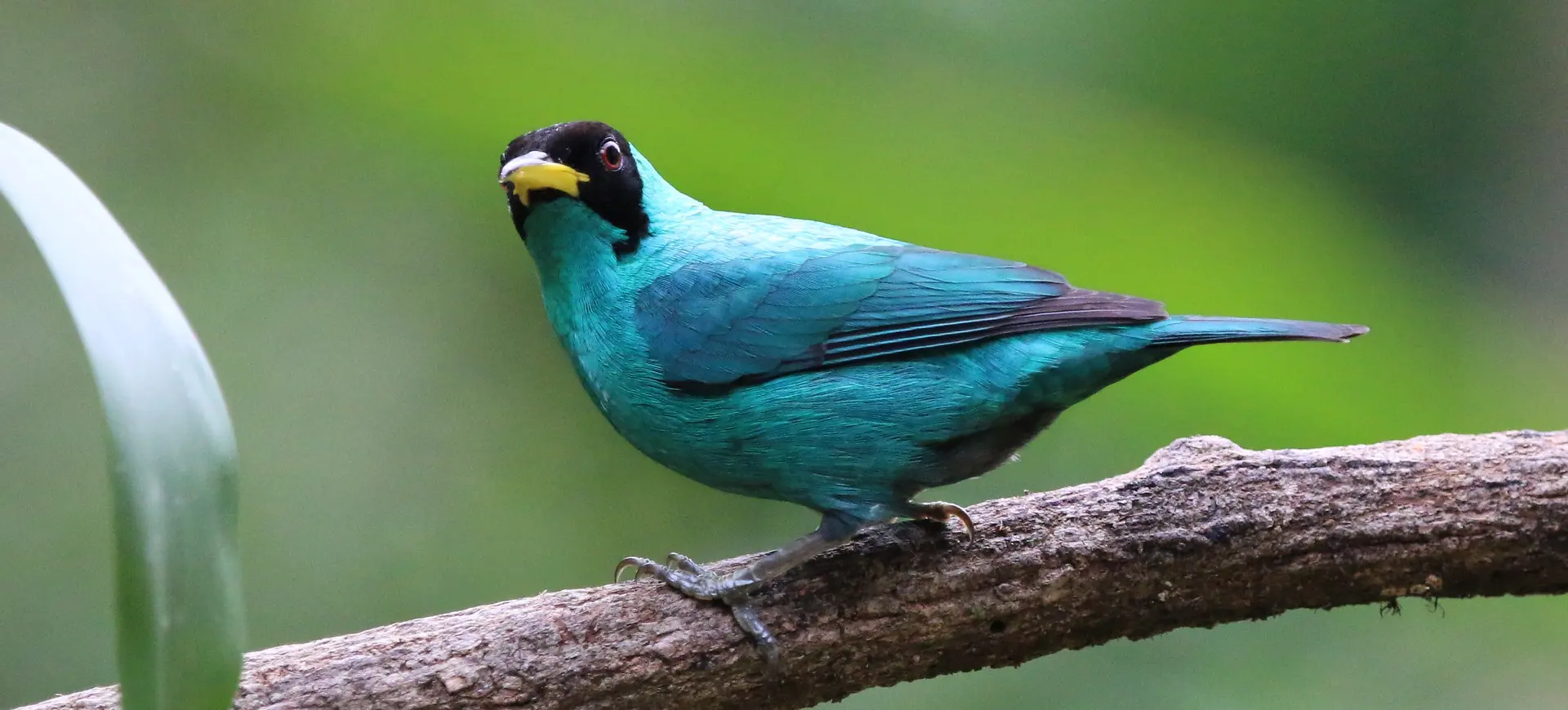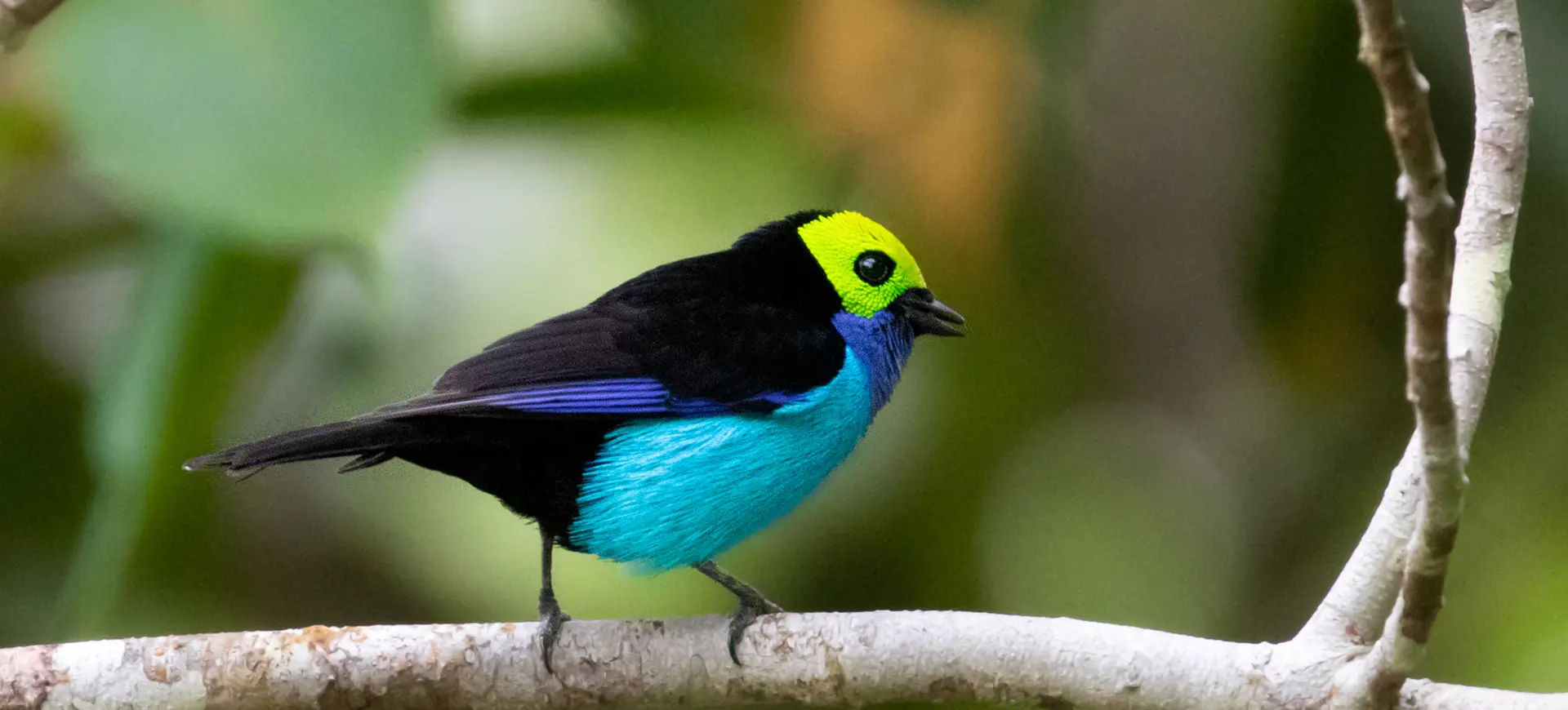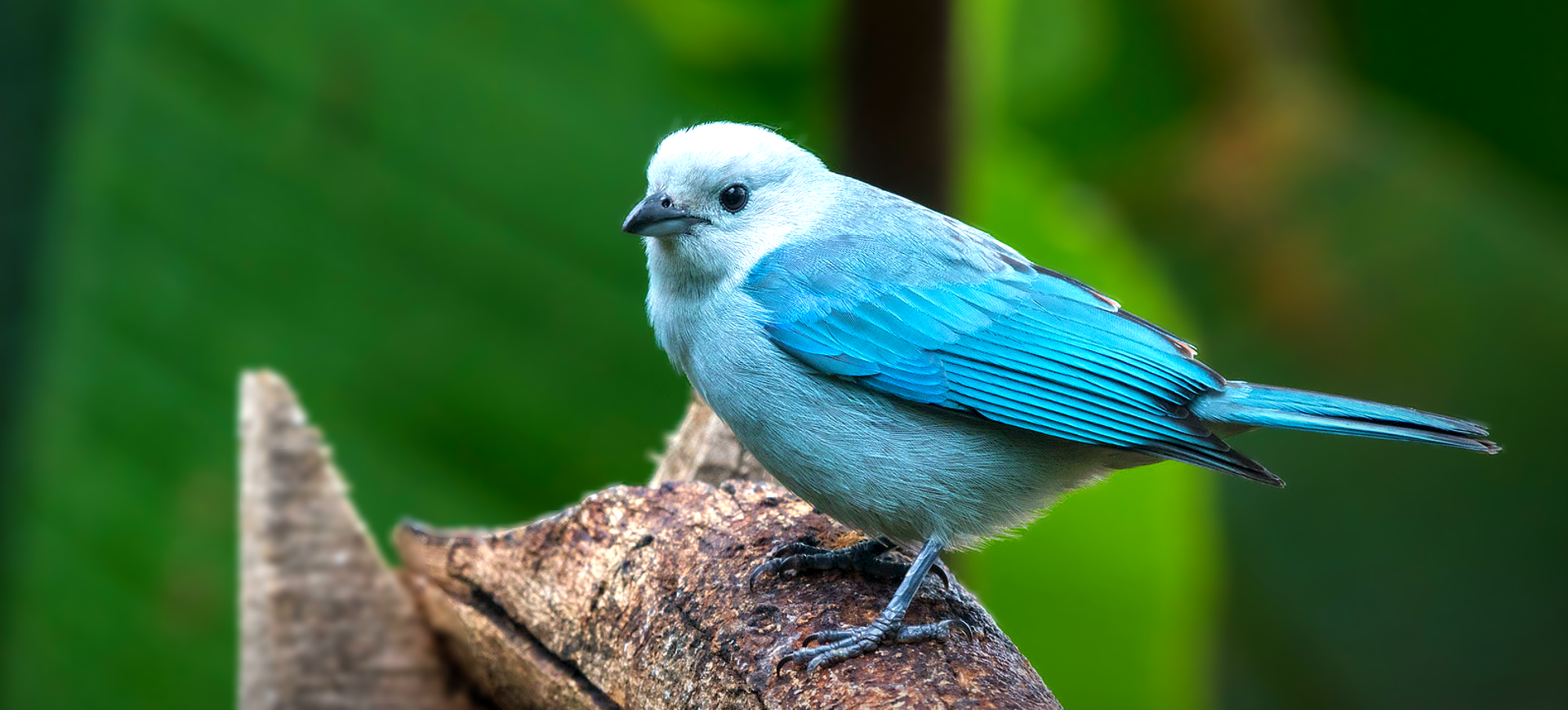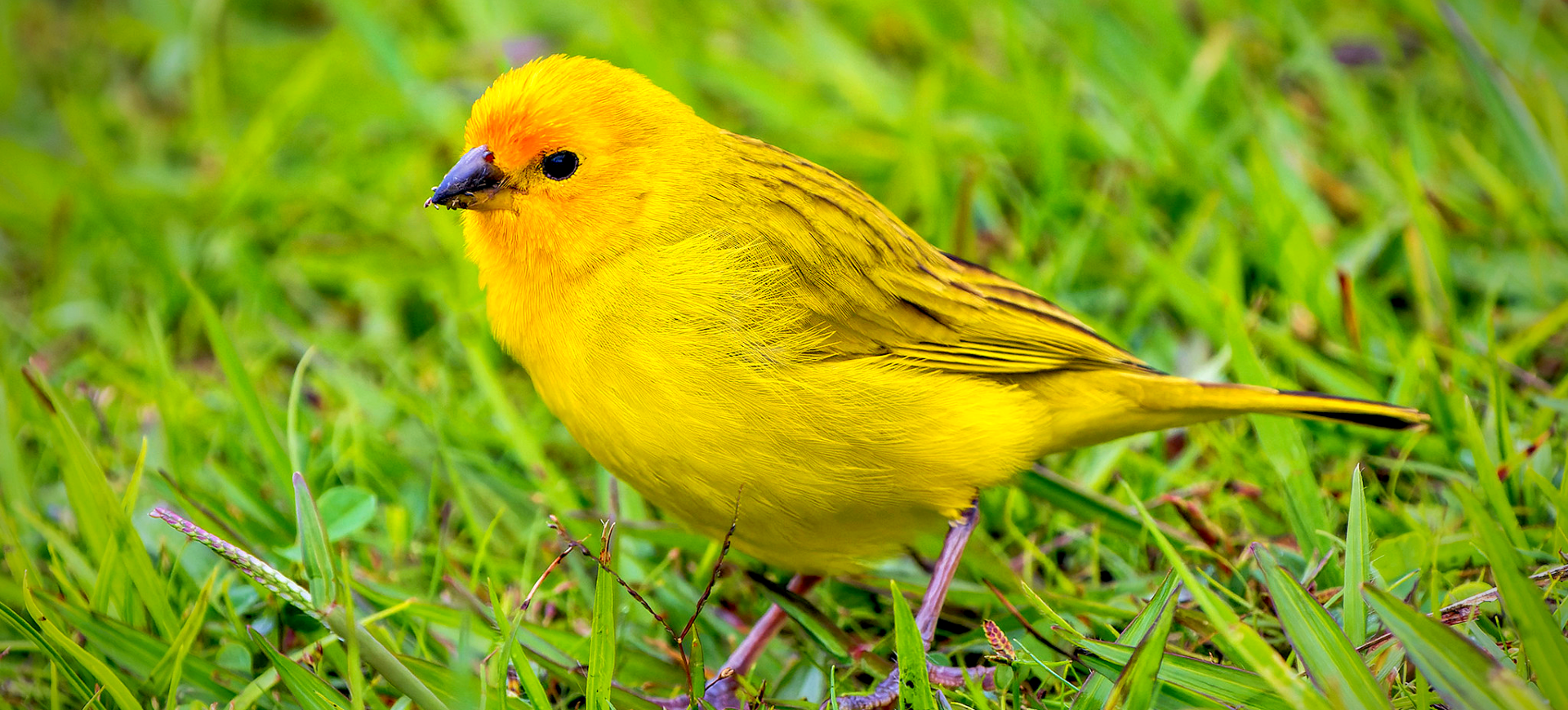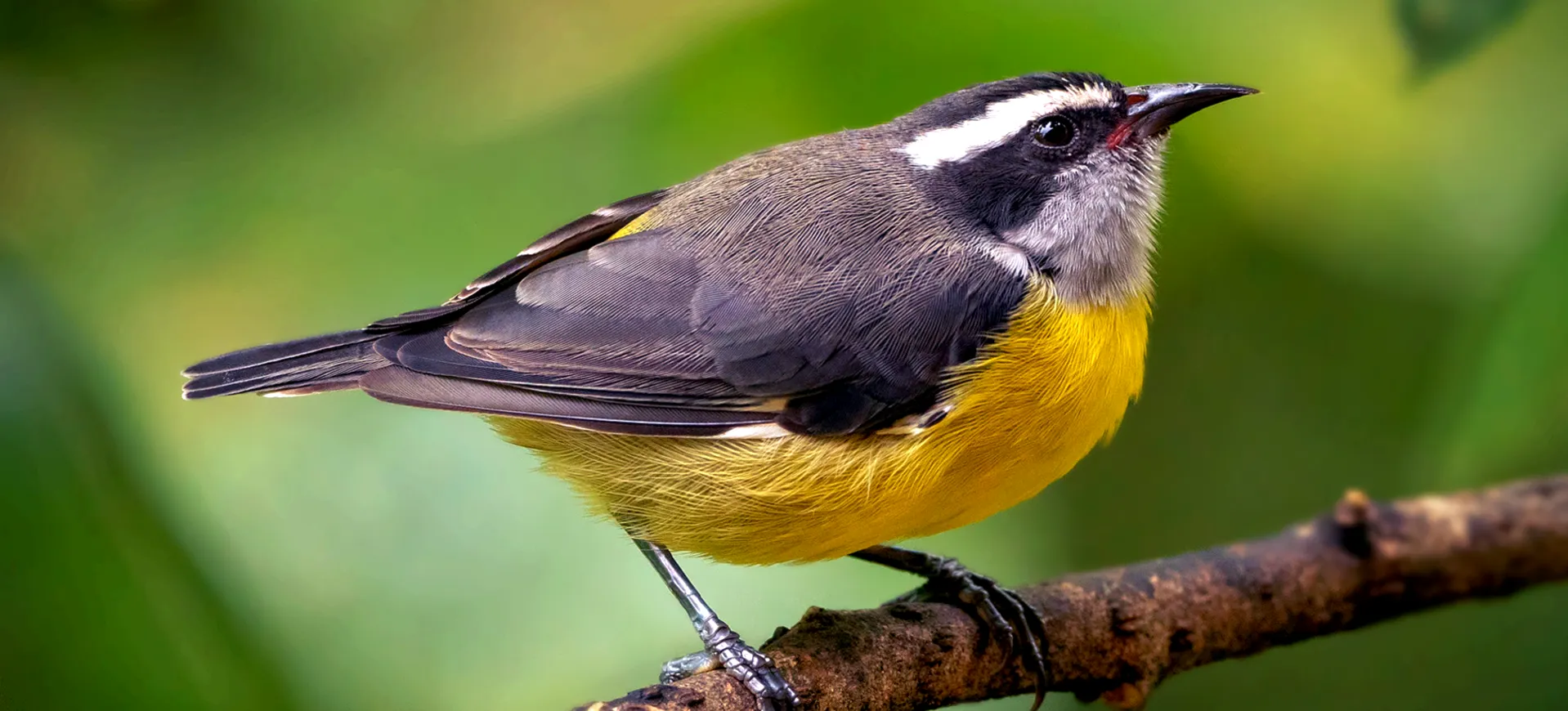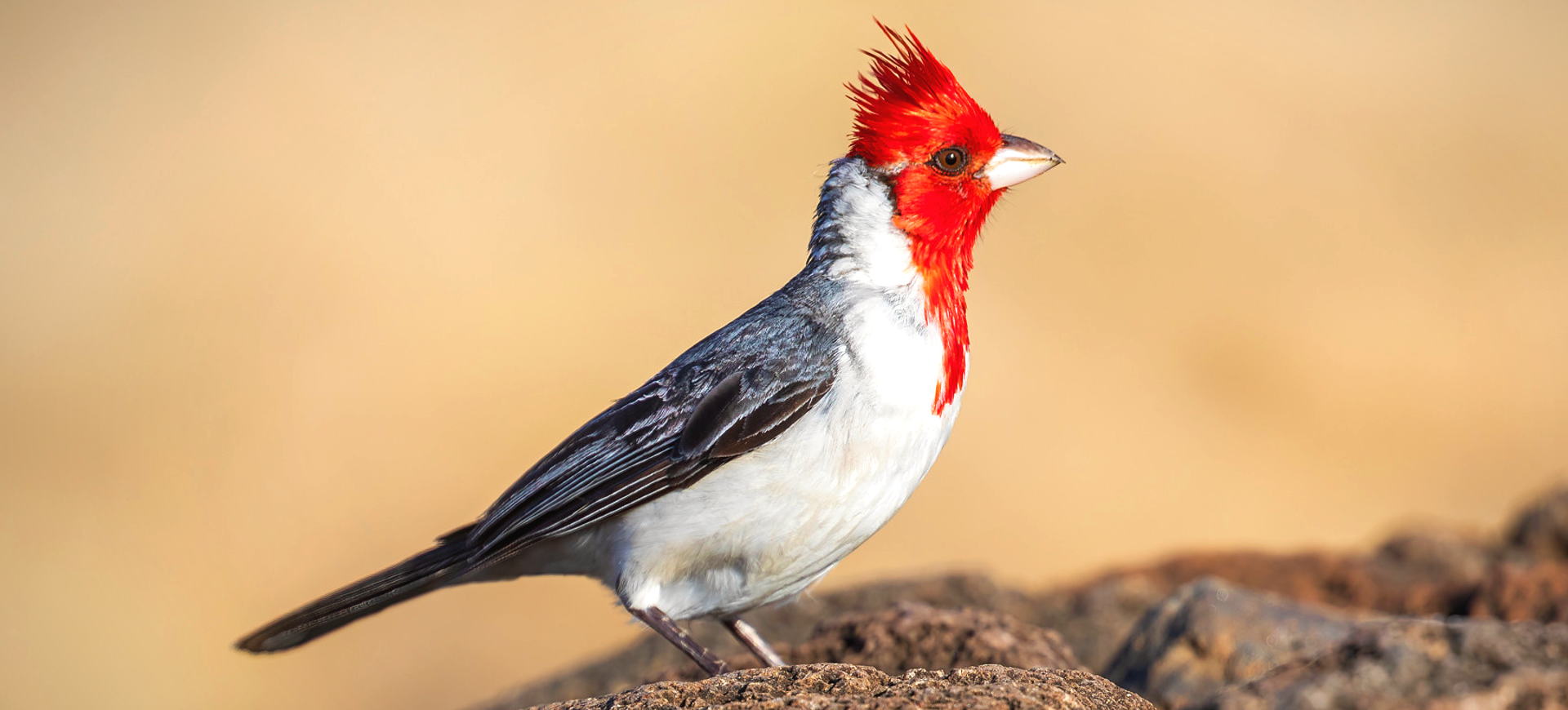Overview
The Turquoise Tanager, Tangara mexicana, is a strikingly colorful bird native to the northern regions of South America. With its vibrant blue plumage accented by shades of green and black, this species is a visual highlight of its habitat, found primarily in the Amazon Basin and the tropical forests of the Orinoco River. Adults typically measure around 14 cm in length, showcasing a blend of turquoise on their upper parts and a brighter blue on their underparts, with distinctive black markings around the eyes and on their wings and tails. This vivid coloration makes them a favorite among birdwatchers and plays a role in their social interactions and mating behaviors.
Turquoise Tanagers are social birds, often seen in small flocks that include individuals from other tanager species, feeding on a diet that consists mainly of fruits, nectar, and insects. They prefer the canopy and edges of forests, secondary growth and areas near watercourses, where their food sources are abundant. Despite their preference for dense habitats, they are also commonly found in gardens and parks, indicating their adaptability to human-altered landscapes. Their presence in diverse environments underscores their role in ecosystem dynamics, particularly in pollination and seed dispersal, contributing to the health of tropical forests.
Conservation efforts for the Turquoise Tanager are focused on habitat preservation, as their natural environments face deforestation and habitat fragmentation threats. Classified as Least Concern by the IUCN, they nonetheless depend on conserving their habitats to maintain stable populations. The Turquoise Tanager’s adaptability to varying degrees of forest cover is a hopeful sign. Still, ongoing efforts to protect and restore tropical forests are essential for ensuring the long-term survival of this species and the myriad other species that share their habitat.
Taxonomy
Kingdom
Phylum
Class
Order
Family
Genus
Species
Sub Species
Type
Physical Description:
The Turquoise Tanager is renowned for its dazzling plumage, with the males and females exhibiting similar color patterns that make them a spectacle in their natural environment. The bird’s body is predominantly a luminous turquoise-blue, with darker, almost black areas on its wings and tail that provide a striking contrast. The intensity of the blue can vary depending on the light, often appearing iridescent. Their eyes are surrounded by a thin ring of bare skin, a common feature among tanagers, adding to their distinctive appearance.
Despite their bright coloring, Turquoise Tanagers can be surprisingly difficult to spot in the dense canopy of the rainforest, where their blue plumage blends with the shadows and foliage. They are robust and agile, medium-sized tanagers capable of quick movements through the trees as they forage for food. Their strong, pointed beaks are well adapted for a diet that includes a variety of fruits and insects, demonstrating the evolutionary adaptations that have enabled them to thrive in diverse tropical environments.

Lifespan: Wild: ~7 years || Captivity: ~10 years

Weight: Male & Female: 0.63-0.88 oz (18-25 g)

Length: Male & Female: 5.5 inches (14 cm)

Wingspan: Male & Female: 6 inches (15 cm)

Top Speed: Unknonwn
Characteristic:
Native Habitat:
The native habitat of the Turquoise Tanager encompasses the lush, tropical forests of South America, particularly within the Amazon Basin and along the Orinoco River. These birds prefer the dense canopy and forest edges, where they find abundant food sources and nesting sites. Their habitat also includes secondary forests and regrowth areas, demonstrating their ability to adapt to environments with varying degrees of human impact.
Preserving these natural habitats cannot be overstated, as they provide essential resources for the Turquoise Tanager and a vast array of biodiversity. Efforts to protect these areas from deforestation and degradation are crucial for maintaining the ecological balance and ensuring the survival of the species that depend on them.
Climate Zones:
Biomes:
Biogeographical Realms:
Continents:
Diet:
Diet & Feeding Habits:
The Turquoise Tanager’s diet is varied and includes fruits, nectar, and insects, making it an important agent of pollination and seed dispersal within its ecosystems. It is particularly fond of ripe fruits, which it skillfully plucks from branches or gathers from the forest floor, contributing to the spread of seeds through its droppings. Including insects in its diet, especially during the breeding season, provides essential proteins for the growth and development of its chicks.
Turquoise Tanagers are often observed foraging in mixed-species flocks, taking advantage of the greater safety in numbers and the increased foraging opportunities such groups provide. This behavior highlights their social nature and their role in the forest’s food web, where they help control insect populations and facilitate the reproductive processes of flowering plants through their feeding activities.
Mating Behavior:
Mating Description:
Turquoise Tanagers are considered monogamous, with pairs forming strong bonds during the breeding season. Their nesting habits involve building a small, cup-shaped nest made from plant materials, typically placed in a tree or shrub. The female is responsible for incubating the eggs, usually laying 2 to 3 per clutch, while both parents feed and protect the chicks once they hatch.
The breeding season for Turquoise Tanagers varies across their range, generally coinciding with the rainy season when food resources are most abundant. This timing ensures that the parents can access sufficient nutrients for themselves and their offspring. The care provided by both parents during the nesting period is crucial for the survival of the chicks, highlighting the importance of stable and secure nesting sites within their habitats.
Reproduction Season:
Birth Type:
Pregnancy Duration:
Female Name:
Male Name:
Baby Name:
Social Structure Description:
Turquoise Tanagers are notable for their social behavior. They are often found in mixed-species flocks that forage together in the forest canopy. Their gregarious nature allows them to efficiently locate food sources while providing a measure of safety in numbers from predators. Within these flocks, Tanagers communicate with various calls and songs, maintaining cohesion and coordinating movements.
During the breeding season, their social dynamics shift, with pairs becoming more territorial and focused on nesting and raising their chicks. The strong pair bonds and cooperative parenting observed in Turquoise Tanagers highlight the importance of social interactions in their reproductive success. Understanding their social structure and behavior is crucial for conservation planning, ensuring that efforts to protect their habitats also support the social and ecological needs of the species.
Groups:
Conservation Status:
Population Trend:
The Turquoise Tanager benefits from a stable population trend across its wide range, attributed to its adaptability and the extensive availability of its preferred habitats in the less disturbed regions of South America. They are a common sight in many areas, including national parks and reserves, where their vibrant colors and active behavior make them a favorite among visitors. Despite this general stability, localized threats such as habitat destruction and fragmentation could impact specific populations, underscoring the need for ongoing conservation efforts.
Preserving the natural habitats of the Turquoise Tanager is essential for maintaining the ecological balance of tropical forests. These efforts benefit the Tanagers and a wide variety of species that share their environment. Conservation initiatives that focus on protecting large forest areas, along with reforestation and sustainable land use practices, are crucial for the continued health of these ecosystems.
Population Threats:
Like many tropical forest species, the primary threat facing the Turquoise Tanager is habitat loss due to deforestation and agricultural expansion. The removal of large tracts of forest for timber, agriculture, and urban development reduces the available habitat for these birds, potentially leading to population declines in affected areas. Additionally, habitat fragmentation isolates populations, limiting their genetic diversity and reducing their resilience to environmental changes.
Climate change also poses a long-term threat by potentially altering the distribution and abundance of the flowering plants and insects that Turquoise Tanagers rely on for food. Mitigating these threats requires concerted conservation efforts, including habitat protection, sustainable development practices, and climate change mitigation strategies, to ensure the survival of the Turquoise Tanager and the complex ecosystems they inhabit.
Conservation Efforts:
The Turquoise Tanager’s conservation efforts focus on habitat preservation and promoting biodiversity within tropical forests. Protected areas and wildlife reserves play a crucial role in conserving these birds’ natural habitats, providing sanctuaries where they and many other species can thrive. Reforestation projects and sustainable land management practices also contribute to habitat restoration, enhancing the connectivity between fragmented habitats and supporting larger, genetically diverse populations.
Education and community involvement are key components of conservation strategies, raising awareness of the importance of tropical forests and the species they support. Engaging local communities in conservation efforts and promoting eco-friendly practices makes it possible to create a sustainable coexistence between humans and wildlife. Continued research and monitoring are essential for understanding the needs of the Turquoise Tanager and for adapting conservation strategies to changing environmental conditions.
Additional Resources:
Fun Facts
- Thanks to their strong beaks, Turquoise Tanagers can consume a wide variety of fruits, including those that are too tough for other birds.
- They are known for their acrobatic feeding habits, often hanging upside down to access fruit and nectar.
- Despite their tropical origins, Turquoise Tanagers can adapt to living near humans and visiting gardens and feeders in urban areas.
- Their vibrant plumage does not fade over time, as the colors result from feather structure rather than pigments, which can reflect light differently.
- Turquoise Tanagers play a significant role in their ecosystems as pollinators and seed dispersers, contributing to the regeneration of tropical forests.
- They have a wide repertoire of vocalizations, which they use to communicate with flock mates and signal alarms.
- The species exhibits little sexual dimorphism, with males and females sharing similar vibrant plumage, which is unusual among brightly colored bird species.
- Turquoise Tanagers can live in various forest types, showing remarkable flexibility in habitat preference.
- They are often a part of mixed-species feeding flocks, including other tanager species, demonstrating their ability to cooperate with other birds in finding food.
- The Turquoise Tanager’s preference for high-canopy habitats makes it challenging to spot, but its bright coloring and active foraging behavior often betray its presence to observant birdwatchers.





